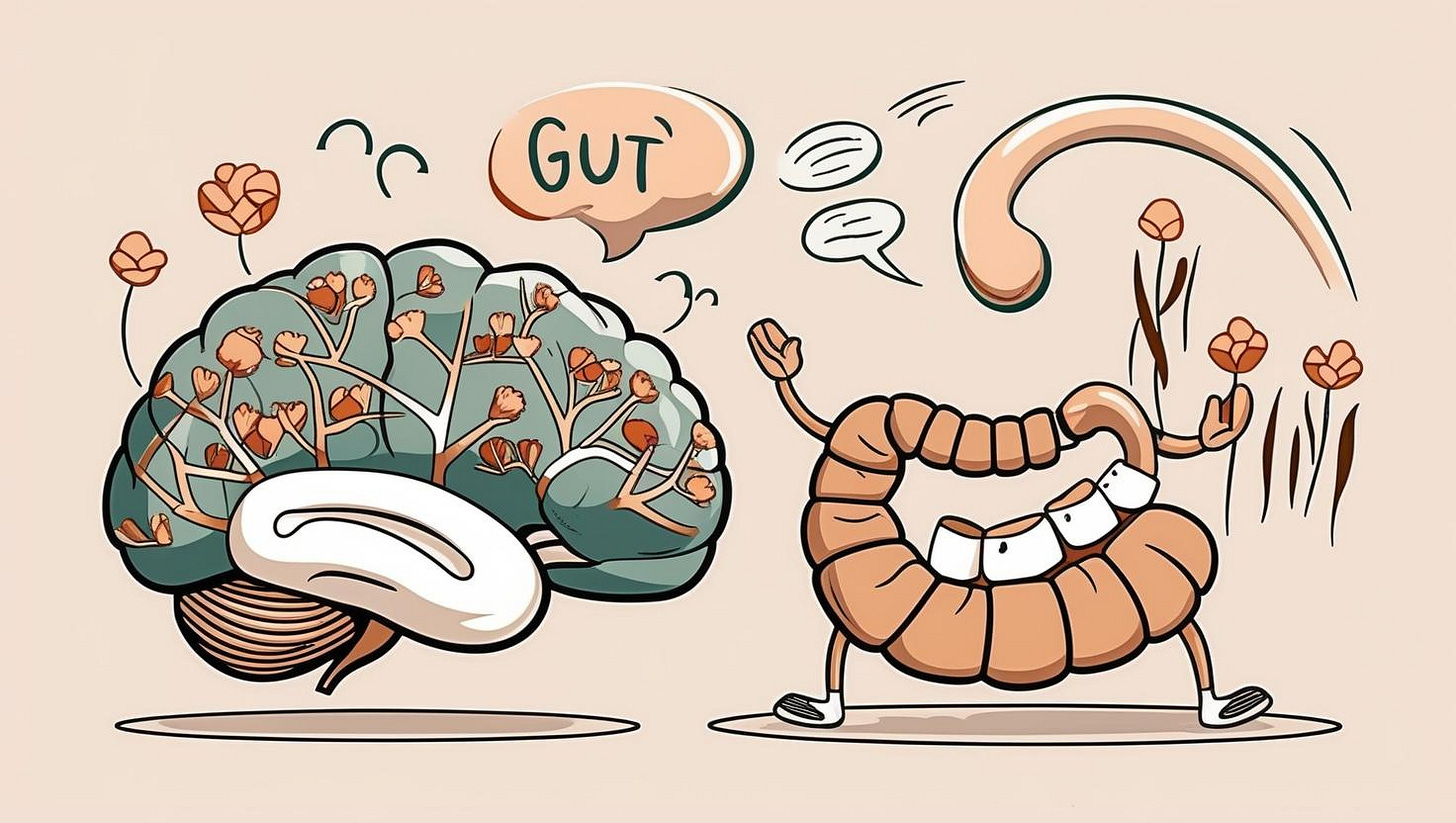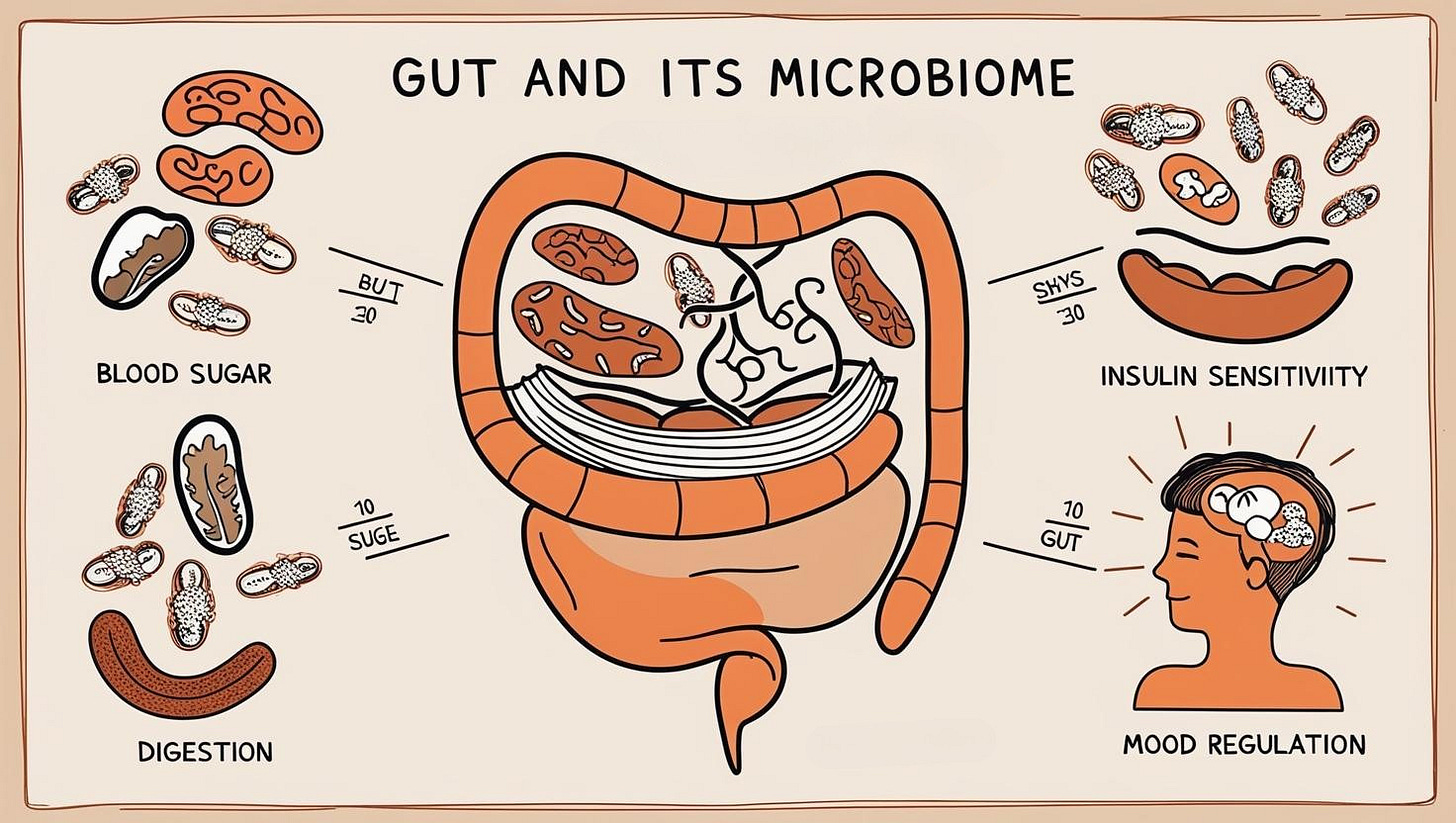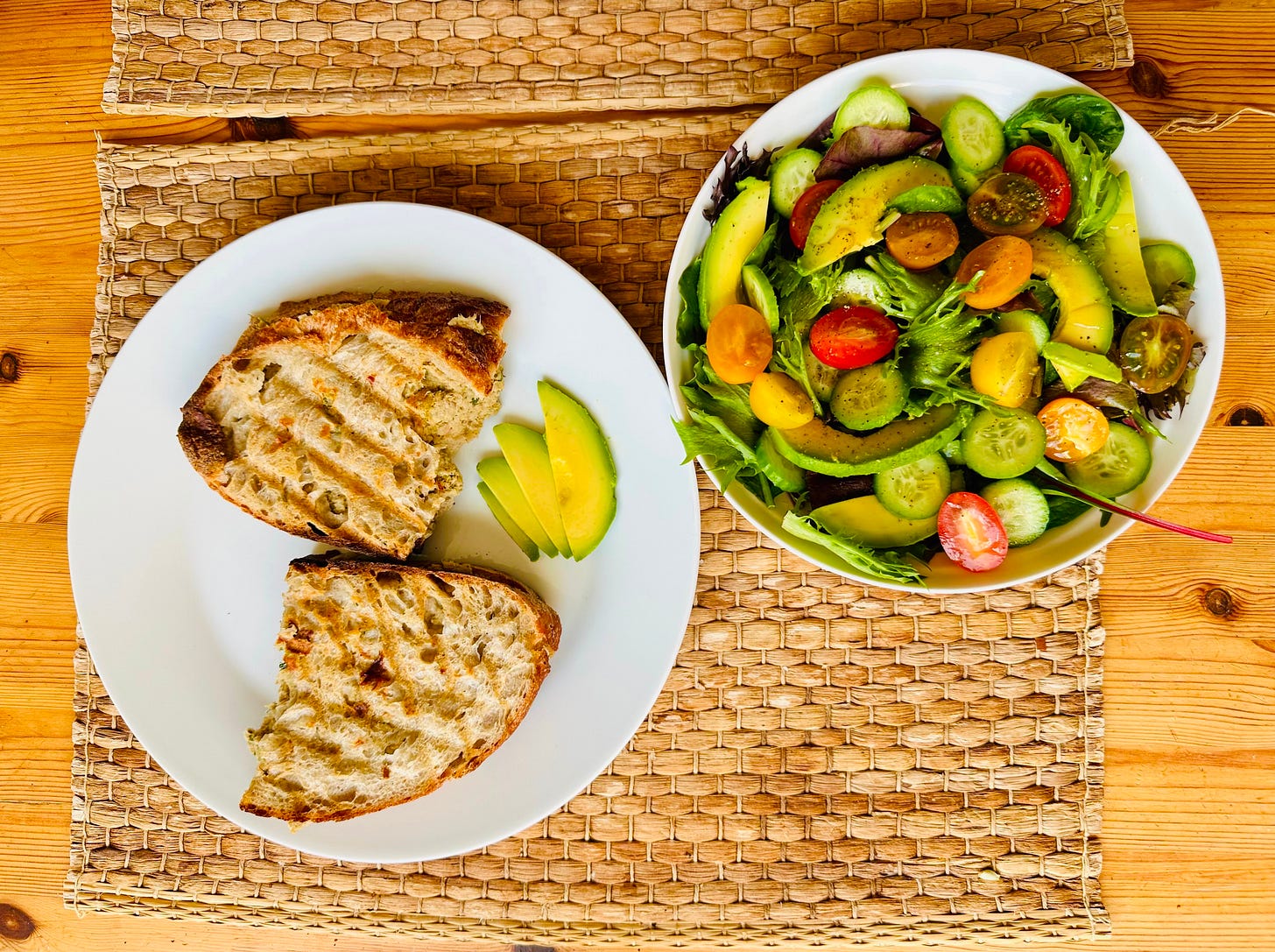The brain and the gut had a chat
Ep 1 of Breaking the Fast series: Vagus nerve, neuropod cells and protein and fiber's role in satiety
After years of skipping breakfast, performing grueling workouts on an empty stomach, and rushing to the office in the mornings, I reached a point of no return when my gut memo’ed my brain: "This isn't going to cut it anymore. Tell Ana that if she skips breakfast again, I’ll release cortisol like it’s Black Friday.
Sincerely, Your Overworked Gut.”
The message came as a smack in the face because it coincided with some health issues I just couldn’t ignore anymore. So, after holding a decade-long grudge against breakfast, I finally waved the white flag.
Something had to change—and fast.
I became determined to make breakfast something I enjoyed, to regain my health, and to keep it. But I knew this wasn’t going to be an easy feat.
The gut microbiome: the conductor of your health
Back in 2012, I wasn’t into health trackers and all that gist yet. I also didn’t know much about metabolic health, the gut microbiome, cortisol and blood glucose rhythms, and how skipping breakfast was flipping off my metabolism.
But I already had two things going for me: a passion for cooking and an insatiable curiosity to learn as much as I could about how my body functions and how the food I eat affects it (a.k.a Googling “Why am I so tired all the time?” at 2 a.m.).
The first thing I learned was that the gut microbiome is vital to overall well-being. Think of it as the conductor of your health, orchestrating a harmonious balance between different microbial species and influencing everything from digestion to mood regulation. Recent studies show that the gut microbiome also plays an essential role in regulating blood sugar, insulin sensitivity, and overall metabolic health.
This shifted my focus from “I hate breakfast” to “How can I make breakfast fun, colourful, and diverse for the gut?” I also started paying attention to how I felt after eating certain things.
Lucky for me, this exploration coincided with a time of frequent travel and contact with different cultures. Naturally, I was exposed to what people in other countries had for breakfast. From shakshuka in Israel to beans on toast in England (yes, beans), I shattered the belief that there are “rules” for breakfast and discovered savory dishes and novel ways of having breakfast. Naan with poached eggs? Sign me up. Sardines on sourdough bread? Yes, please.
Through experimentation, I realized that both protein and fiber contribute to satiety. Rather than obsessing over one or the other, or worse, counting macros, I kept playing with different options until I settled on the holy trinity I mentioned in the previous article: protein (eggs, sardines, and cottage cheese), good fats (avocado and olive oil), and fiber (vegetables and seeds), plus the additional slow-energy-release carbs (sourdough, sweet potatoes, etc.) that don’t ghost me by 10 a.m.
The vagus nerve (the brain and the gut had a chat)
But the revelation in my quest for breakfast came when I learned about the vagus nerve—the pathway that helps the gut and the brain communicate. It wasn’t until 2015, though, that I stumbled upon Diego V. Bohórquez’s Ph.D. work on neuropod cells, and I grasped how remarkable the gut really is.
And yes, ‘neuropod’ is a real word—I didn’t make it up after three espressos. I don’t drink espresso.
According to his recent study and this Hubermanlab podcast episode, these tiny cells quickly transmit information about food pH and composition (micro and macro nutrients) to the brain via vagus nerve connections. They act as an overachieving food critic who is living in your gut, judging if that pastry you just ate deserves applause or a side-eye—and shaping cravings accordingly:
High sugar intake = neuropod cells partying in your brain’s pleasure centers (hello, cravings).
Protein = stable blood sugar levels and fewer snack attacks later.
This insight helped me understand why certain foods trigger specific reactions in my body, enabling me to adjust my breakfast and other meal choices accordingly. It explained why, after a poor night's sleep, my body craved pancakes smothered in jam for breakfast.
Through all the experimenting and learning, I got three key insights:
Diversity is fundamental to a healthy gut microbiome, and no single food can ensure that. This is why consuming a variety of foods like fruits, vegetables, legumes, nuts, and seeds supports microbial diversity.
The gut microbiome plays a crucial role in regulating blood sugar, insulin sensitivity, and overall metabolic health. It also interacts significantly with multiple body systems, like the immune system and the brain.
There needs to be a balance between beneficial microbes in the gut microbiome (e.g., Bifidobacteria, Lactobacilli) and opportunistic species that can cause harm
Now that you know how breakfast can impact your gut and mood, let's play a game. Leave a comment below about your favorite savory breakfast. The more diverse the answers we get, the better.
What is your savoury go-to breakfast personality?
A) Shakshuka enthusiast
B) Avocado toast and poached eggs lover
C) Eating like a chef omlette
To close this article, I’ll share a recipe that these tiny judges will love. I call it a neuropod-nourishing breakfast because “holy trinity” sounds like a Dan Brown novel.
Comforting Tuna melt panini
This tuna melt recipe uses homemade hummus for extra fiber instead of mayonnaise and celery for crunch. Store-bought hummus also works well in this recipe if you're short on time.
If you love mayonnaise, like my friend D, you can swap the hummus for mayo.
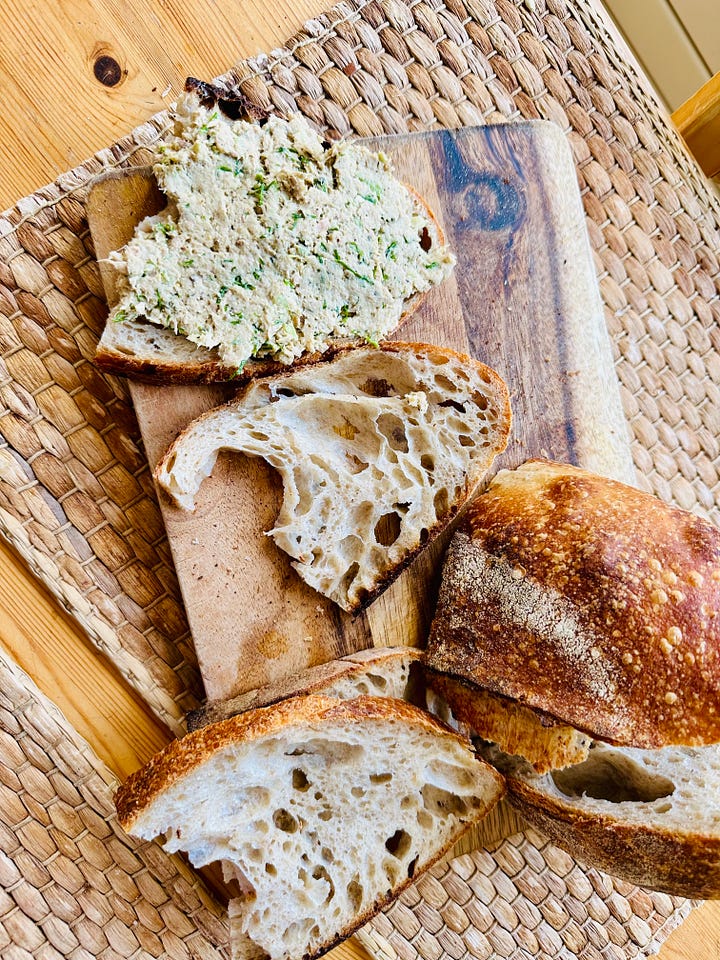
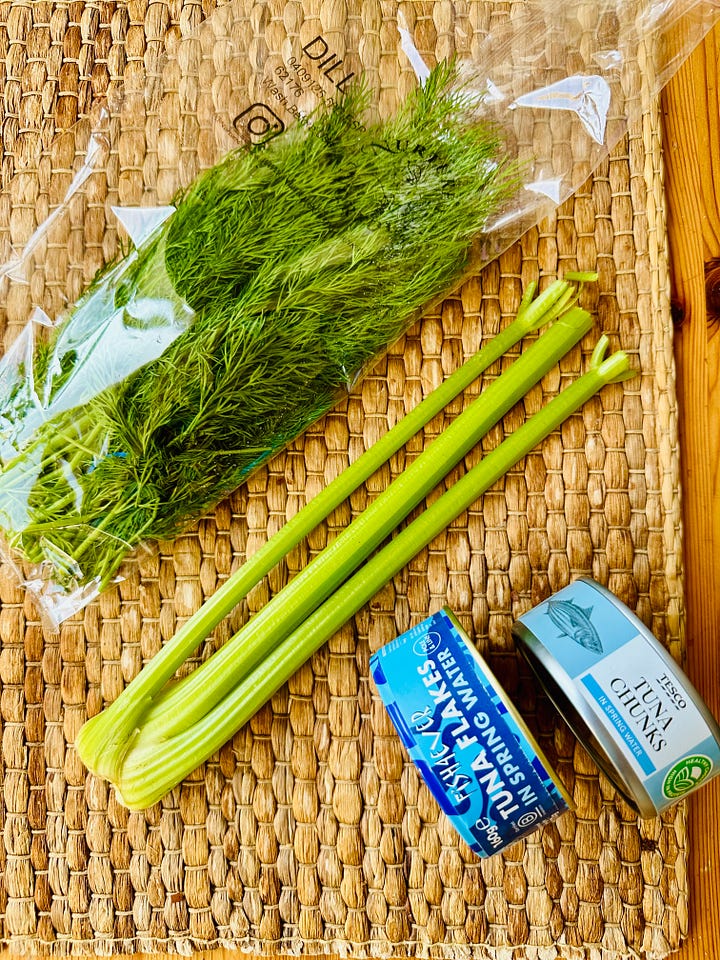
Serves:2-3
Prep time: 15 mins
Cooking time: 10 mins
Ingredients
For the tuna mix
2 cans of tuna
2-3 celery sticks
1 small bunch of dill
Salt and pepper to season
For the hummus
1 can of chickpeas
1 garlic clove
juice of half a medium-sized lemon
1 generous tablespoon of tahini
1 1/2 tablespoon of olive oil
1 1/2 teaspoon of zatar mix or other herbs you like
Salt and pepper to season
2-3 ice cubes to make the hummus smooth
Method
Wash and finely dice the celery stalks and dill.
Drain the liquid from the canned tuna, then shred it using a fork or a food processor. Mix the tuna, diced celery, and dill, and season with salt and pepper.
In the meantime, drain the liquid from the chickpeas can, wash them, and pat them dry.
Add a teaspoon of ghee or oil to a pan over medium-high heat and the chickpeas. Cook them for 5-8 minutes, adding the zatar spice mix halfway through and seasoning them with salt and pepper.
Transfer the ingredients to a blender or food processor with a tablespoon of olive oil, a generous amount of tahini, a clove of garlic, and lemon juice.
Mix them until smooth, then taste and adjust the taste if necessary. Check to see if more olive oil is needed.
Add 1-2 cubes of iced water to the blender and continue mixing. The humus should be smooth-textured.
Add half of the hummus to a bowl with the tuna, dill, and celery and mix well. You should obtain a thick tuna spread.
Cut generous slices of sourdough bread, add the paste, and assemble the sandwiches. Toast the sandwiches in a sandwich maker or in a pan for a few minutes on each side.
Serve with a fresh side salad, extra avocado slices, or some pickled onion slices.
Let me know in the comments if you try it.
P.S. I hope you enjoy this as much as I did. x



